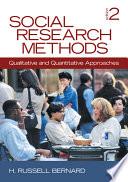
Architectural Research Methods
A practical guide to research for architects and designers—now updated and expanded! From searching for the best glass to prevent glare to determining how clients might react to the color choice for restaurant walls, research is a crucial tool that architects must master in order to effectively address the technical, aesthetic, and behavioral issues that arise in their work. This book's unique coverage of research methods is specifically targeted to help professional designers and researchers better conduct and understand research. Part I explores basic research issues and concepts, and includes chapters on relating theory to method and design to research. Part II gives a comprehensive treatment of specific strategies for investigating built forms. In all, the book covers seven types of research, including historical, qualitative, correlational, experimental, simulation, logical argumentation, and case studies and mixed methods. Features new to this edition include: Strategies for investigation, practical examples, and resources for additional information A look at current trends and innovations in research Coverage of design studio–based research that shows how strategies described in the book can be employed in real life A discussion of digital media and online research New and updated examples of research studies A new chapter on the relationship between design and research Architectural Research Methods is an essential reference for architecture students and researchers as well as architects, interior designers, landscape architects, and building product manufacturers.
- ISBN 13 : 1118415477
- ISBN 10 : 9781118415474
- Judul : Architectural Research Methods
- Pengarang : Linda N. Groat, David Wang,
- Kategori : Architecture
- Penerbit : John Wiley & Sons
- Bahasa : en
- Tahun : 2013
- Halaman : 480
- Google Book : https://play.google.com/store/books/details?id=wdNwicV6oaQC&source=gbs_api
-
Ketersediaan :
Features new to this edition include: Strategies for investigation, practical examples, and resources for additional information A look at current trends and innovations in research Coverage of design studio–based research that shows how ...









